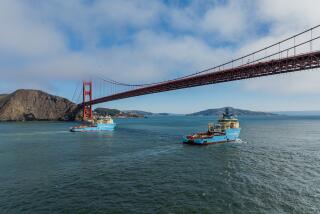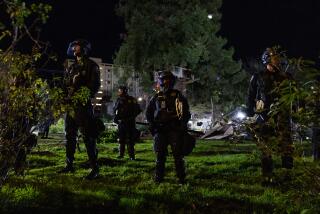Cleanup Tests Skills and Costs $973 Million
- Share via
MIDDLETOWN, Pa. — The cleanup of the damaged reactor at Three Mile Island has been more complicated, taken longer and cost more than anyone ever imagined even after the unimaginable happened.
Dealing with the intensely radioactive molten core posed an unprecedented technical challenge after the accident on March 28, 1979.
Initially projected to take four years and cost $430 million, the cleanup is now targeted for completion in August, 1990, at a total bill of $973 million.
The cleanup required the development of new equipment, such as tools to pick up debris under 40 feet of water, a remote-control arc torch, cameras to peer into tight, highly radioactive spaces and remote-control robots to spray and decontaminate wall surfaces.
Sealed Building
Heavily protected workers could not even open the door to the reactor’s sealed containment building on the first entry attempt May 21, 1980. The first successful incursion came two months later.
Technical problems and environmental concerns delayed processing the 700,000 gallons of coolant water that spilled into the basement during the accident. It finally was removed, treated and stored by April, 1982.
The water, still in storage and swollen to 2.3 million gallons by additional cleanup work, remains the subject of intense debate. General Public Utilities Corp. wants to filter out the remaining cesium, strontium and carbon and boil the water away. Since the water would still contain some radioactive tritium, local government officials and anti-nuclear activists are concerned. The Nuclear Regulatory Commission is expected to rule on the proposal this year.
Find Half Fuel Had Melted
Technicians did not get their first look at the reactor’s radioactive uranium fuel until July 21, 1982, when workers using an 18-inch-long television camera discovered the core’s top five feet had collapsed into rubble.
They did not confirm that half the fuel had melted until February, 1985, and it was 1988 before experts believed they knew for certain what happened when the reactor lost most of its cooling water.
Removal of the uranium started in 1985 but was slowed by difficulty in breaking up the molten pieces and by algae-like organisms that thrived in the warm, oily water and cloaked the reactor’s interior.
Shipments of the fuel to federal laboratories in Idaho started in July, 1986, but were held up for seven months in 1988 by problems with the canister gaskets. Just under 30% of the fuel remains to be shipped.
More to Read
Sign up for Essential California
The most important California stories and recommendations in your inbox every morning.
You may occasionally receive promotional content from the Los Angeles Times.













